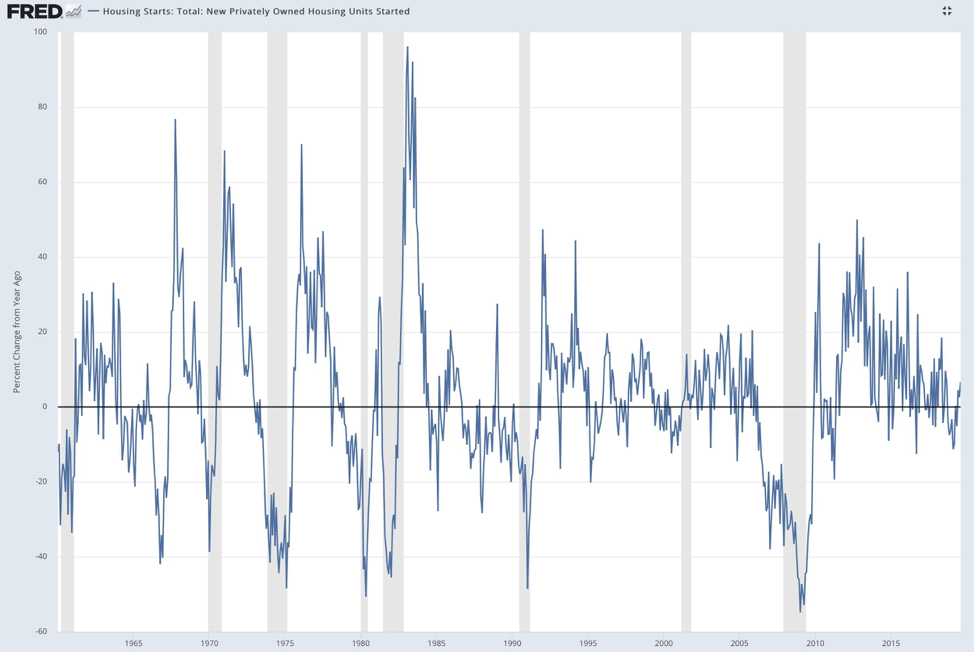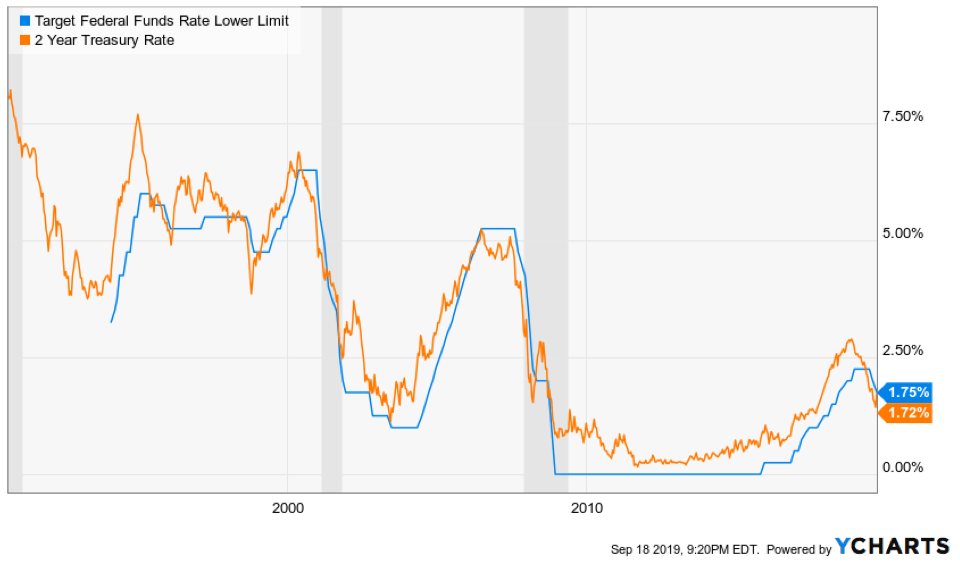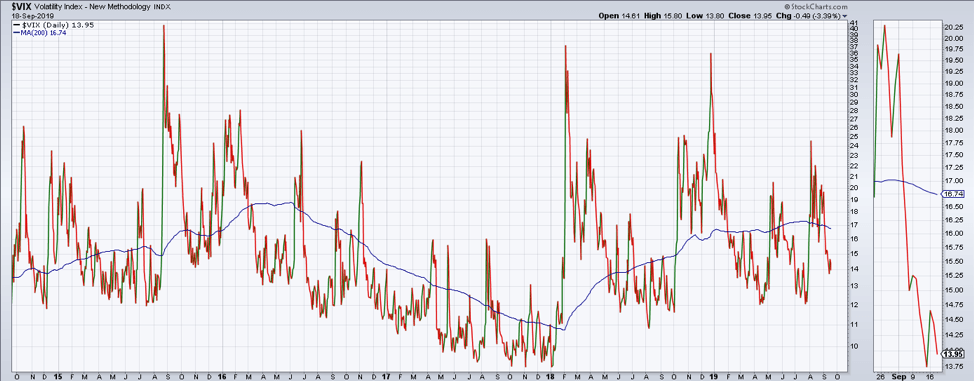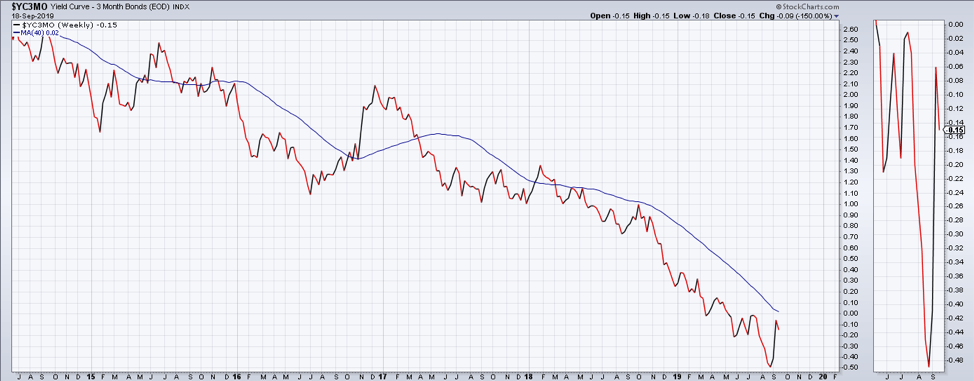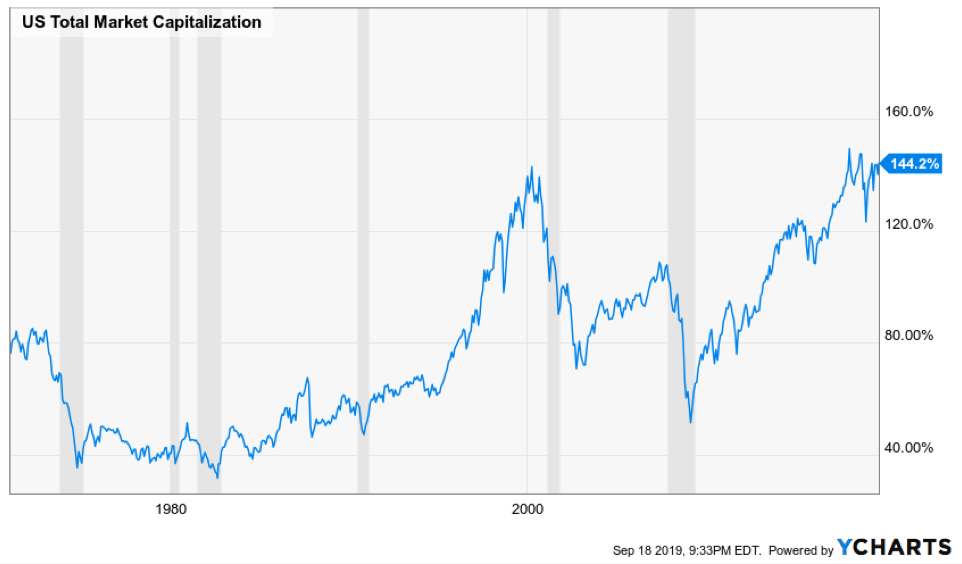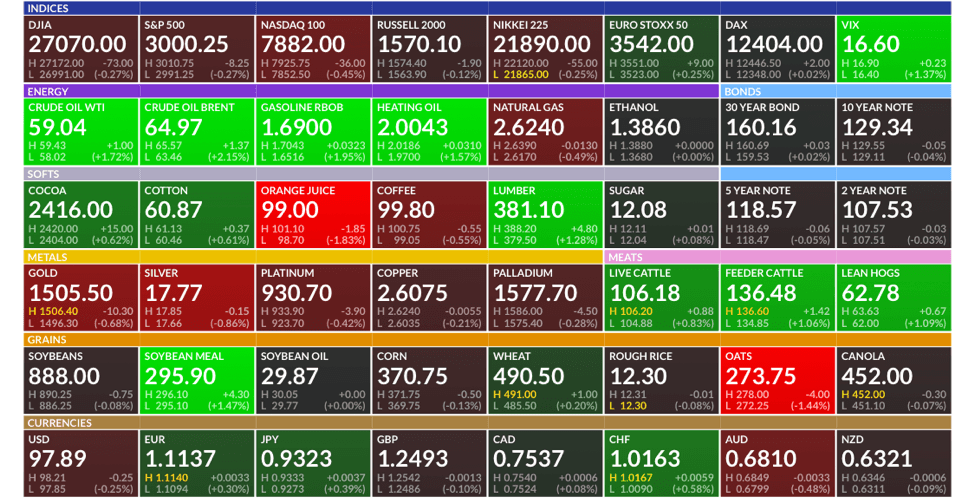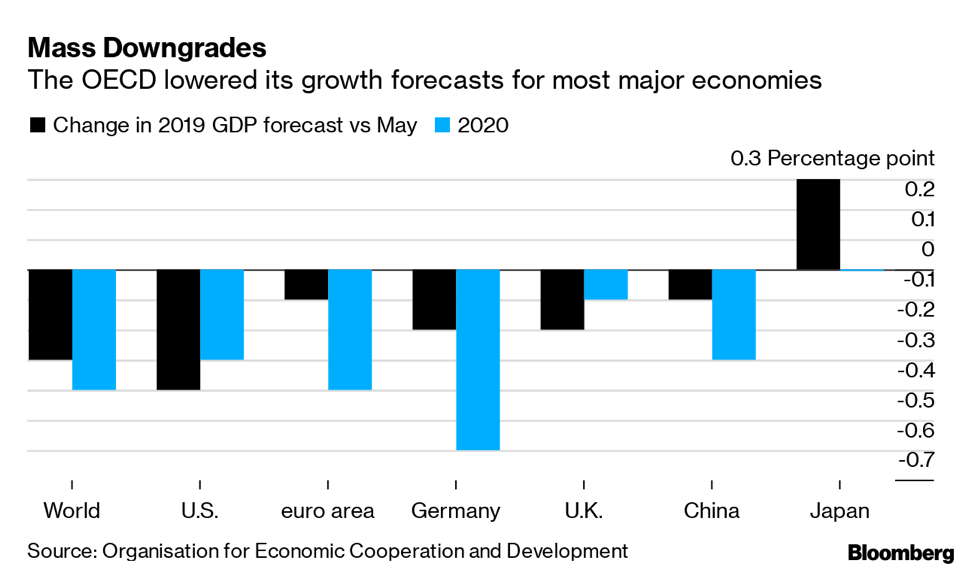Highlights:
Market Summary: The Federal Reserve cut interest rates by 25 basis points yesterday. Markets started to fall during Federal Reserve Chairman Jerome Powell's speech, dropping almost -200 points on the Dow at one point. Stocks rallied into the close, however, with the S&P 500 (IVV) finishing higher by 0.07%. The top performing asset classes were long-term Treasury bonds and the U.S. dollar. Crude oil dropped another -2% on the day. Gold was also weaker, finishing lower by -0.65%.
Economic Update: Housing starts surged 12.26% month-over-month. On a year-over-year basis, housing starts are up 6.6% through August. This is a great sign as Housing is a leading economic indicator. A strong housing market is indicative of a strong U.S. consumer, and a strong U.S. consumer is suggestive of a strong overall economy. The slowdown in housing was one of the early warning signs of the broader economic slowdown that we have experienced over the past year. If we can get some continued positive news out of the housing market, the economy could be ready to turn a corner.
Fed Funds Rate: The Federal reserve lowered their benchmark interest rate by a quarter point yesterday. Now the lower limit is close to where the 2-year Treasury yield closed the day. The lower limit of the Federal Funds rate is 1.75%, while the 2-year Treasury note yield closed the day at 1.72%. It is our opinion that the Fed needed to cut interest rates to below the 2-year yield. Close but no cigar. We expect the 2 year to dictate whether further rate cuts occur in the coming months. The dot plot suggested no further cuts in 2019, but if data continues to deteriorate economically, we expect the 2 year to move lower, and eventually the Fed will have to cut more.
Volatility: Equity market volatility continues to deteriorate, which is positive for risk assets. Despite a Fed that wasn't dovish enough in our opinion, markets remain calm. This comes in the face of turmoil in overnight interest rates (repo rates hitting 10%) and the Fed injecting over $100B this week in liquidity. Nevertheless, volatility continues to move lower. The $VIX is approaching important support at 12. A sustained move below 12 would suggest a lower volatility regime. That would be encouraging for risk assets.
Yield curve: The yield curve remains inverted. The difference between the 10-year Treasury note and the 3-month Treasury bill is 15 basis points (3-month T-bill is higher). The curve has been inverted since May of this year. What is interesting is that a recession typically follows the re-steepening of the yield curve. Will the curve steepen and move back above zero?
Valuations: Stocks remain close to record valuations according to the Market Cap to GDP ratio. Several other measures of valuations support his notion as well. Margin-adjusted cyclically adjusted price to earnings, price to sales, median price to sales, and market cap to GVA are all in the top decile of historical observations. Now is probably one of the worst times to buy and hold the S&P 500 in history. Hopefully these historically accurate measures of market valuation have broken down and this time is different. Otherwise, the passive investment bubble could leave a lot of investors in pain at some point over the next several years.
Factors: The top performing factor over the last year is low volatility. Low vol equities (SPLV) are up 16.87% through yesterday on a total return basis. Small caps (IJR) are the worst performing factor, down -7.70% over the same time period. Dividend growth is also strong and is consistently in the top 3 sectors over 3-month, 6-month, and 12-month look back periods. The strength in low volatility and dividend growth is indicative of a slowing economic environment and defensive posturing among equity market participants.
Source: YCharts Chart(s) of the Day: FedEx stock performance and the performance of the company is an important leading economic indicator according to history. FedEx was down over -12 percent on the back of disappointing earnings and reduced guidance for next quarter. If history is any guide, the drop in FedEx could be an early warning signal to a drop in overall economic production (GDP). Let's hope this is another correlation that is no longer relevant. Maybe we are in a new paradigm or new economy? Maybe...
Futures Summary:
News from Bloomberg:
Intensifying trade conflicts have sent global growth momentum toward lows last seen during the financial crisis, and governments aren't doing enough to prevent long-term damage, the OECD said. The organization cut almost all the economic forecasts it made just four months ago and sees world growth at a mere 2.9% this year.
The Fed will inject cash into the money market for a third day to prevent rates spiking. It will again offer up to $75 billion in a so-called overnight repurchase agreement operation, adding temporary liquidity to restore order in the banking system. The central bank cut the rate on excess reserves yesterday to control the key fed funds rate, but many analysts called for more aggressive steps like a standing fixed-rate repo facility or balance-sheet expansion.
Datadog rejected a $7 billion-plus takeover offer from Cisco in recent weeks to pursue an IPO, people familiar said. The software company is expected to start trading today. It priced shares above an already increased target range which values the company at around $7.8 billion.
U.S. Steel is the third producer to lower its outlook for this quarter. The shares plunged in early trading after the company said it expects an adjusted loss of 35 cents a share, much wider than the estimated 6-cent loss, echoing similar guidance from Nucor and Steel Dynamics. U.S. Steel cited weakening steel prices, a December fire at a coke-making facility and restructuring charges.
U.S. equity-index futures fell with the dollar and Treasury yields declined in the aftermath of the Fed rate cut. The yen rallied the most in three weeks after the BOJ failed to follow the Fed in easing policy. The pound nudged higher before the BOE's rate decision. European shares rose, while Asian markets were mixed. Oil and gold advanced.
WealthShield is a division of Emerald Investment Partners, an SEC Registered Investment Advisor. Advisory services are only offered to clients or prospective clients where WealthShield and it’s representatives are properly licensed or exempt from licensure. Past performance is no guarantee of future returns. Investing involves risk and possible loss of principal capital. No advice may be rendered by WealthShield unless a client service agreement is in place. Before investing, consider your investment objectives and WealthShield’s charges and expenses.
Recommended Content
Editors’ Picks
EUR/USD hovers around 1.0700, eyes on US first-quarter GDP data

EUR/USD hovers around the 1.0700 psychological level on Thursday during the early Thursday. The modest uptick of the major pair is supported by the softer US Dollar. Later in the day, Germany’s GfK Consumer Confidence Survey for April will be released.
USD/JPY finds its highest bids since 1990, near 155.50

USD/JPY keeps breaking into its highest chart territory since June of 1990 early Thursday, testing 155.50 for the first time in 34 years as the Japanese Yen remains vulnerable, despite looming Japanese intervention risks. Focus shifts to Thursday's US GDP report and the BoJ decision on Friday.
Gold price lacks firm intraday direction, holds steady above $2,300 ahead of US data

Gold price remains confined in a narrow band for the second straight day on Thursday. Reduced Fed rate cut bets and a positive risk tone cap the upside for the commodity. Traders now await key US macro data before positioning for the near-term trajectory.
Injective price weakness persists despite over 5.9 million INJ tokens burned

Injective price is trading with a bearish bias, stuck in the lower section of the market range. The bearish outlook abounds despite the network's deflationary efforts to pump the price. Coupled with broader market gloom, INJ token’s doomed days may not be over yet.
Meta Platforms Earnings: META sinks 10% on lower Q2 revenue guidance Premium

This must be "opposites" week. While Doppelganger Tesla rode horrible misses on Tuesday to a double-digit rally, Meta Platforms produced impressive beats above Wall Street consensus after the close on Wednesday, only to watch the share price collapse by nearly 10%.

